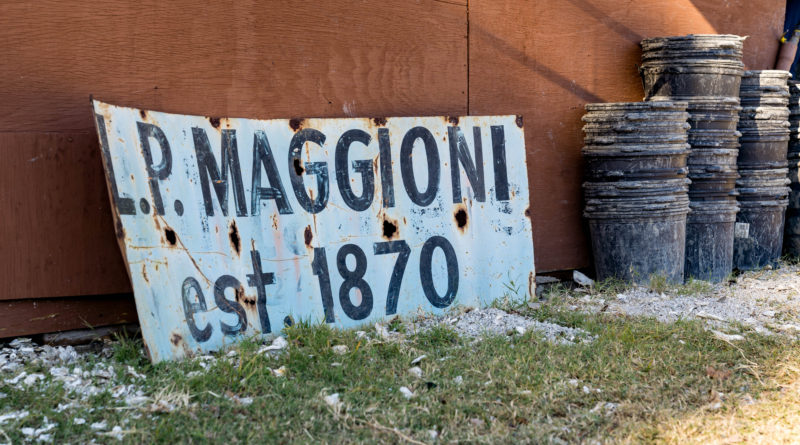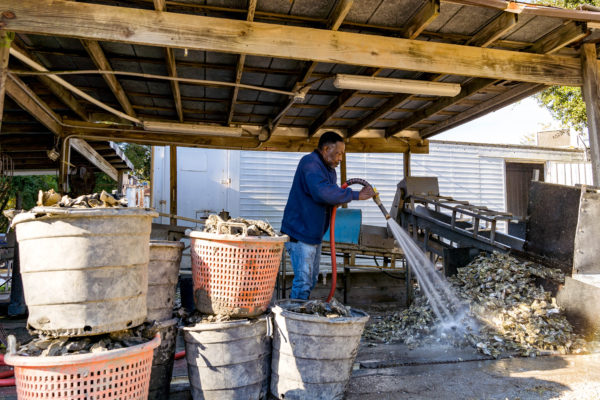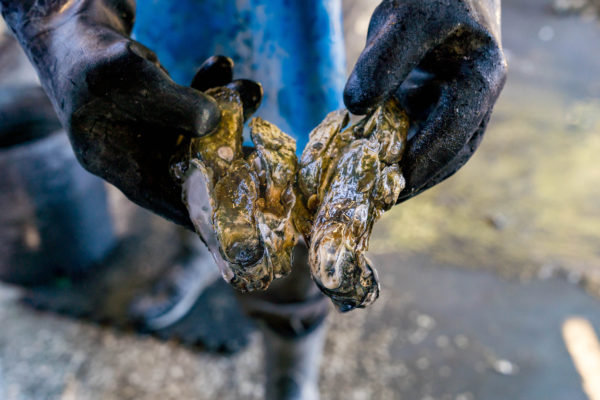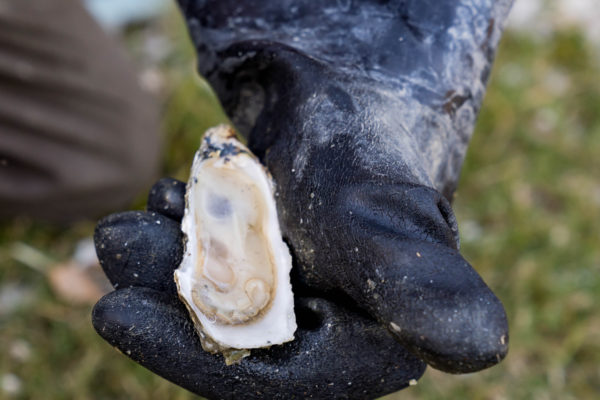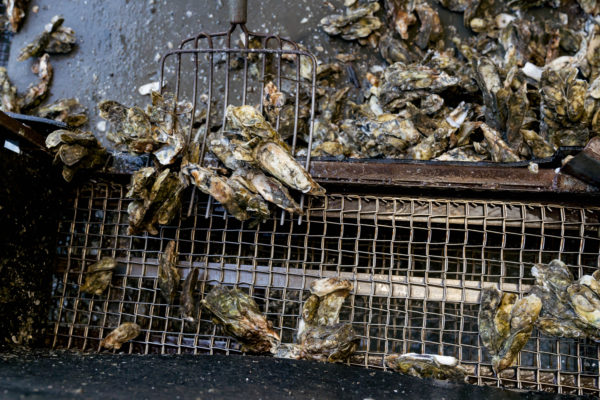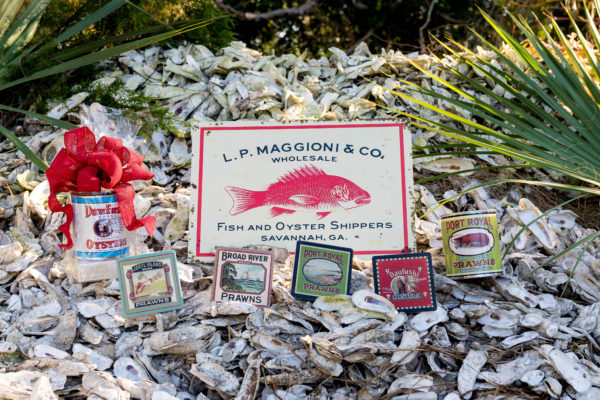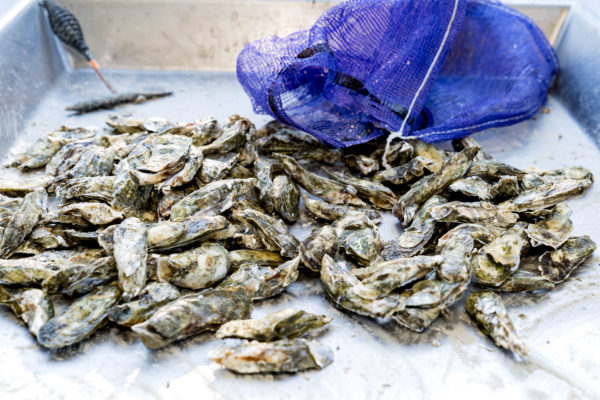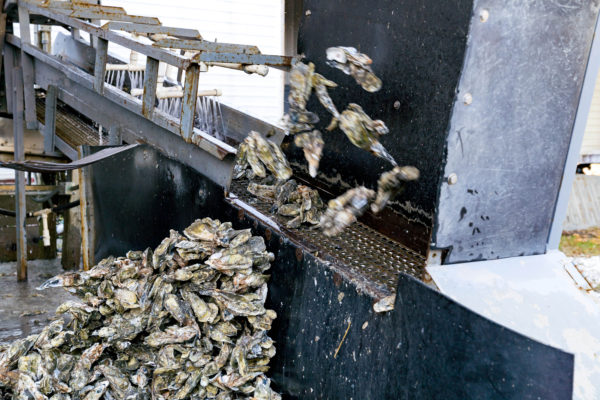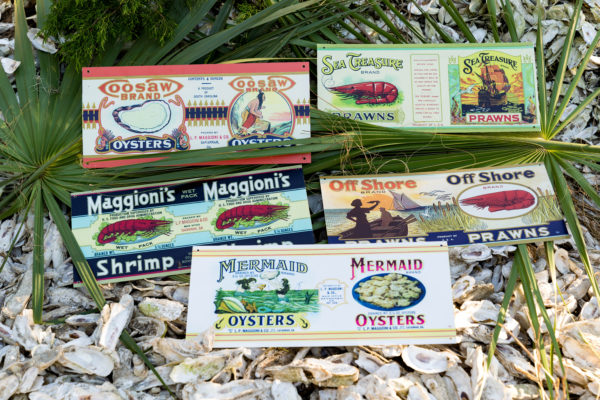MAGGIONI OYSTER COMPANY
 Generations of Harvest
Generations of Harvest
story by ROBIN COKER photos by SUSAN DELOACH
The waterways of the Lowcountry run as deep as the generations of families that have made their living on them. Beaufort is chalked full of amazing seafood families, but none have been in business longer than the Maggioni Oyster Company—originally known as L.P. Maggioni Seafood. By combining sustainable harvesting techniques with proper cultivation practices, Maggioni Oyster Company has been able to produce the highest quality, select grade, wild-harvested bushels and single oysters in the entire Lowcountry and coastal empire!
It all started in the late 1800s when Luigi Paolo Maggioni was sent by his parents to a seminary in Genoa, Italy. In protest, he jumped out of a window at the school, signed up as a cabin boy on a ship, and hightailed it to America. Unfortunately, he was shipwrecked by a massive storm off Cedar Key, Florida. But as fate would have it, Luigi found a job at a local pencil factory where he met his future wife, Natalie Betellini.
The young couple eventually relocated to Savannah, Georgia, and this is where L. P. Maggioni Seafood was formed. Though they started by producing shellfish, in 1883, the duo opened their first oyster factory on Daufuskie Island. A few years later, they expanded to Beaufort and built the oyster steam cannery on Lady’s Island. L.P. Maggioni Seafood was able to unbelievably build fifteen canneries that were scattered between South Carolina, Georgia, and Florida. When oysters and shrimp were not in season, the Maggionis would can anything and everything from string beans to citrus. This kept the wheels turning and the workers with full-time occupations.

Paul Maggioni, the grandson of Luigi, was the next generation that continued to operate L.P. Maggioni Seafood. From a warehouse located in Savannah, he and two of his sons, Ralph and Phillip Maggioni, were able to oversee the management of their canneries in Beaufort, and in Thunderbolt, Harris Neck, and Brunswick, Georgia. Steamed, locally canned oysters were so sought after that the entire business was retooled to accommodate the demand.
Fast forward to 1985 when L. P. Maggioni Seafood had just closed its doors after 100+ years in business. As fate would have it, Roddy Beasley, husband to Angela Maggioni, was the plant manager when the business closed. He was able to purchase the name Maggioni Seafood from the family and some family-owned land on Eddings Point Road on Saint Helena Island. Roddy crafted an oyster washing system that is still in use today on Eddings Point more than 30 years later.
After pumping out clean, salty bushels and clams for 28 years, Roddy took ill in 2014 and was forced to relinquish his position in the company. This is when his son, Jeff Beasley, picked up the torch and assumed the title of fifth generation oyster farmer! Still a full-time musician, Jeff found juggling 200+ shows per year and an oyster business he never intended on pursuing was too much to handle, and something had to give. “I had logged over 2500 performances in my career and was ready for a change but not in the direction of the oyster business. I tried to sell it, but no takers, so I buckled down and took full ownership after my father passed in 2015. And I’m glad I did! It’s challenging and stressful but never boring, and I go to sleep at night instead of starting my last set at midnight,” says Jeff.
Today, Jeff Beasley has renamed the business Maggioni Oyster Company—since that is all he sells these days! He still manages to perform during his four-month off-season as The Jeff Beasley Band, but he says, “It’s just enough gigs to remind me what a tough job performing for a living can be!”
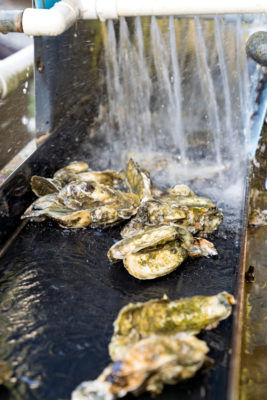 The oyster business and music business are a lot alike: one cultivates a crop and the other a following. Both need to be maintained to sustain a long, fruitful career. Jeff says, ”There are multiple ways to cultivate oyster beds, but the best way is to cull in place. When you are harvesting, culling means knocking off the little oysters and only bringing in the bigger oyster clusters. With this practice, you are literally reseeding in the very spot you just extracted from!”
The oyster business and music business are a lot alike: one cultivates a crop and the other a following. Both need to be maintained to sustain a long, fruitful career. Jeff says, ”There are multiple ways to cultivate oyster beds, but the best way is to cull in place. When you are harvesting, culling means knocking off the little oysters and only bringing in the bigger oyster clusters. With this practice, you are literally reseeding in the very spot you just extracted from!”
Maggioni Oyster Company leases approximately five hundred acres of marshland from the state of South Carolina. Scattered throughout Saint Helena, Beaufort, and Okatie, these leases were handed down from his grandfather Paul Maggioni to his father Roddy Beasley to him. Every year, all of the state’s private leaseholders are required to harvest a certain amount of bushels per acre and are also necessary to cultivate a certain amount of bushels per acre. Generally, 50 bushels per acre is the annual cultivation quota per acre. “I’ve tried multiple cultivating techniques like planting bamboo, raking down top oysters, and dragging a chain link fence by boat over the beds. However, I’ve found that the best way to cultivate is to embellish the areas where you know the oysters grow well. We do this by taking congested clumpy clusters, breaking them up, and filling in the gaps on better growing areas. This method is called ‘relay.’ Usually, we relay from one side of the creek to the other. Oysters always grow better on one side of the creek or river. Likely, one side gets more sun burns off bacteria and promotes better growth…but who knows. Don’t waste time and money on speculative ventures promoting new growth. Look for proof of life and embellish those areas!” replies Jeff.
For those who are a novice in the industry, oysters are bivalves, meaning they pump up to 50 gallons of water through them each day. This means they actually filter the water. The trickle-down effect is that seafood harvested from these waters is cleaner and healthier to eat. In addition to filtering the water, oysters also help keep the mud from eroding the banks and marshes. Turbulence from boat traffic is a marsh killer, but oysters combat it by taking the beating.
The future for Jeff and Maggioni Oyster Company looks like more of the same with continuing to harvest oyster beds like they have been doing for the last 150 years. Jeff explains, “I’m also hoping to build a party pavilion at my factory at Eddings Point Road on Saint Helena. I want to host private functions and have a regular Thursday night oyster roast and chili-type events with music. We need that on this island. I remember coming over as a teenager and eating at Steamers with my dad, and that was a cool place.” Bringing a beautiful location together with food and music sounds just like what Saint Helena Island needs!
For more information on Maggioni Oyster Company and to order their fresh, local oysters, visit www.maggionioysters.com.

